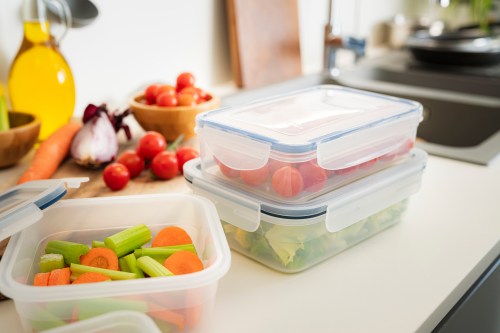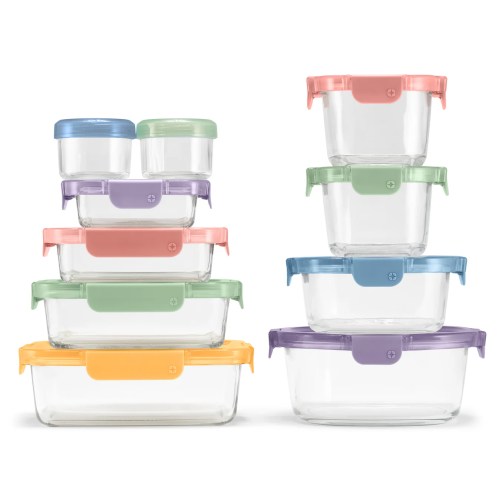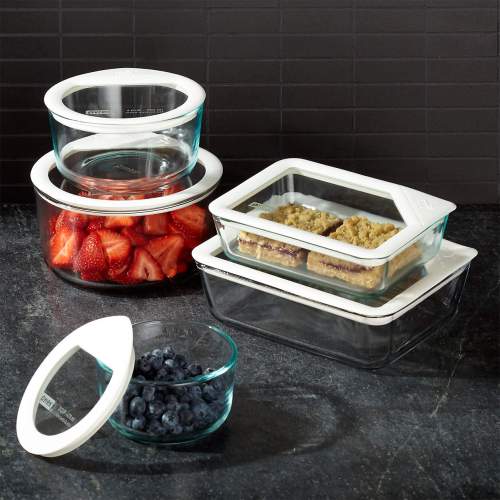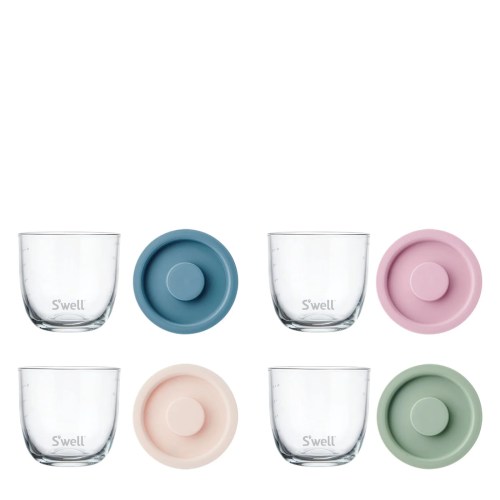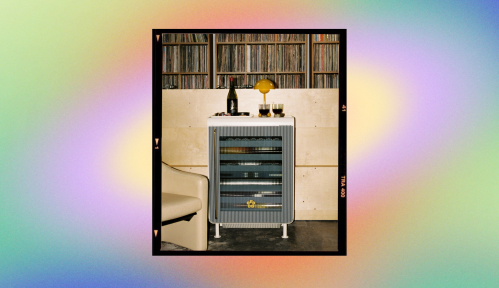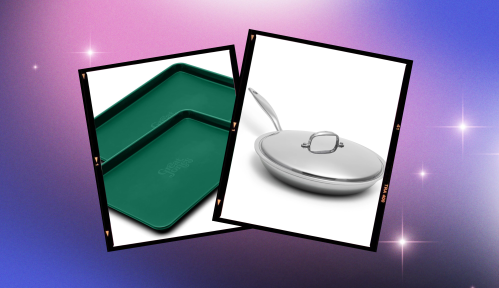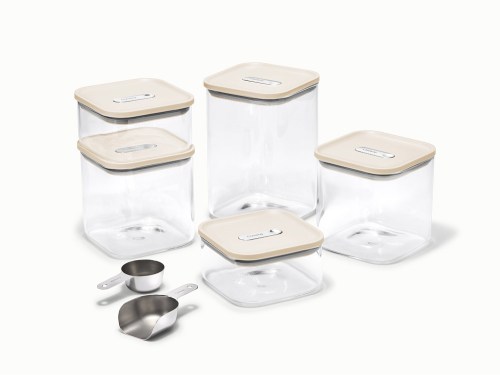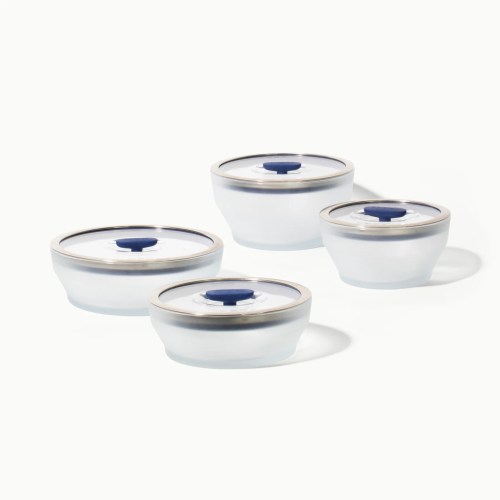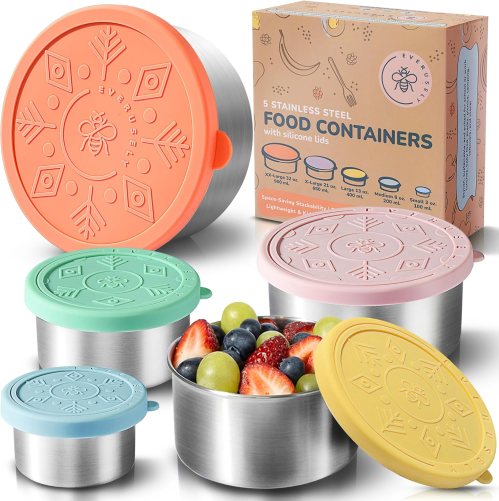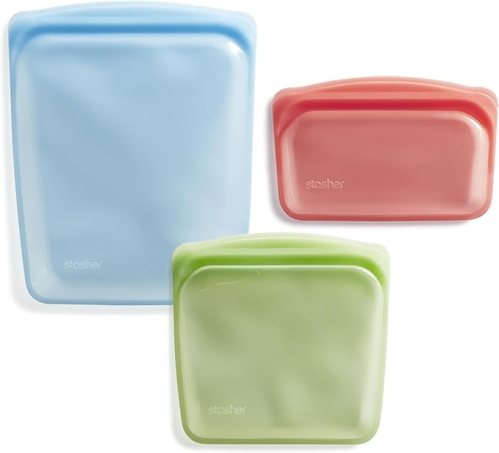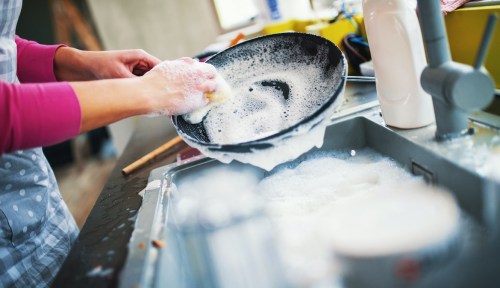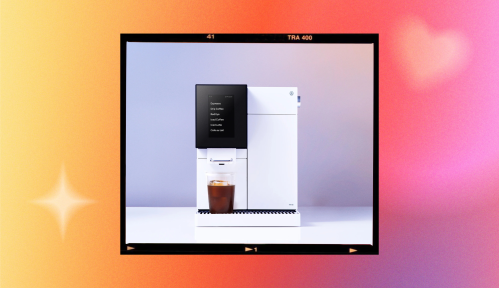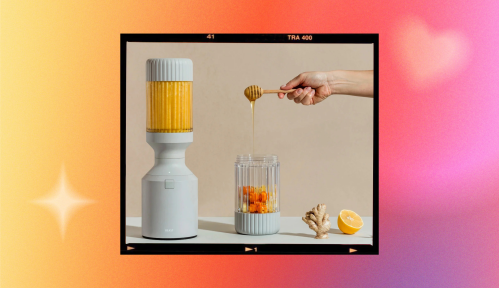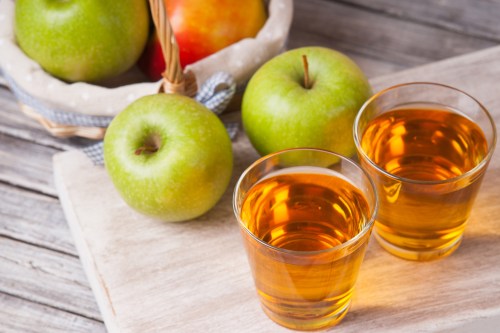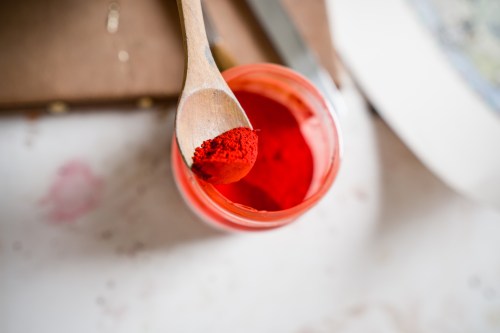Our editors independently select these products. Making a purchase through our links may earn Well+Good a commission
By now, you're probably aware that there is no shortage of reasons that plastics (and microplastics, the tiny pieces of material that break down from larger plastics) are less than ideal for our health and the environment. And, while it's seemingly impossible to eliminate plastic entirely from our lives, there are some extremely easy swaps you can make in your home to reduce your plastic use and your microplastic exposure. One super simple way to use less plastic? Ditch your plastic food storage containers—especially any that are scratched, old, or regularly microwaved.
Experts in This Article
Dr. Po-Chang Hsu is a physician and the Medical Content Expert at Alpas Wellness.
Dr. Lisa Erdle is a ecotoxologist, microplastics expert, and the Director of Science & Innovation at the 5 Gyres Institute.
"Over time, plastics can leach chemicals like BPA or similar compounds into food, particularly when heated," explains Dr. Po-Chang Hsu, Physician & Medical Content Expert at Alpas Wellness. "Even plastics labeled 'BPA-free' aren’t always safer because they may contain other additives that haven’t been studied as thoroughly. Plus, every time you reuse or wash plastic containers, tiny microplastic particles can wear off and end up in your food." Yuck.
So, what materials can you use instead to stow your leftovers or tote your lunch? Luckily, with our experts' guidance, we came up with plenty of suggestions. Read on to learn more about the risks of microplastics and shop some healthier, non-plastic storage containers.
Best non-plastic food storage containers, at a glance
- Best set: Ello Color Lock 20-Piece Set, $55
- Best entirely plastic-free: Pyrex Ultimate 10-Piece Glass Storage Set, $80
- Best for small storage: S'well Glass Prep Bowl Set, $33
- Best for dry storage: Caraway Glass Airtight Container Set, $245
- Best for parties: Served Vacuum Insulated Serving Bowl, $50
- Best microwavable: Anyday The Everyday Set, $135
- Best stainless steel: Everusely Stainless Steel Container Set, $50
- Best storage bags: Stasher Silicone Reusable Bags, $43
- Best lunch bowl: W+P Porter Bowl, $20
What are microplastics?
Dr. Hsu explains that microplastics and nanoplastics are exactly what they sound like—tiny pieces of plastic that are either formed intentionally or break down from larger plastic products.
"Microplastics are small enough to be seen with the naked eye (under 5 mm), while nanoplastics are even smaller and can only be seen under a microscope," says Dr. Hsu. "The big concern is that these particles are now showing up in our water, food, and even inside the human body—in blood, lungs, and even the placenta1 in some studies. While we’re still learning about the full impact, early research suggests they may lead to inflammation, hormone disruption, and other potential health issues, especially with long-term exposure."
And they're... in our food storage containers?
Yup. According to Dr. Lisa Erdle, an ecotoxologist, microplastics expert, and Director of Science & Innovation at the 5 Gyres Institute, plastic food containers can release microplastics into the food and beverages they hold, especially when heated, scratched, or reused.
"Just because something is labeled as 'microwave-safe' does not mean that it is safe for human health; it simply means it won't melt in the microwave," says Dr. Erdle. "Plastics are essentially long chains of polymers, mixed in with chemical additives. Microwaving introduces heat and hydrolysis, a chemical reaction that can break the bonds, causing a container to shed tiny bits of plastics and toxic chemicals." In other words, we're consuming a little bit of our plastic food containers whenever we use them.
What to swap in
If the idea of plastic food storage now officially freaks you out, don't panic: Dr. Hsu and Dr. Erdle reassure us that when it comes to food storage, there are plenty of safer (and more eco-friendly!) alternatives to switch to.
"Glass containers are one of the best swaps—durable, easy to clean, and microwave-safe," says Dr. Hsu. "Stainless steel is another great option, especially for packed lunches or dry snacks. If you want something more flexible or lightweight, food-grade silicone is a solid bet and is generally considered safe. Even ceramic can be a good choice if it’s labeled lead-free. For wrapping food, beeswax wraps are a natural, reusable alternative that work well for sandwiches or covering bowls in the fridge."
Ready to ditch your dingy old Tupperware? Scroll on to shop a handful of glass, stainless steel, ceramic, and silicone food containers that will help reduce the amount of microplastics in your kitchen.
Shop 10 non-plastic food storage container alternatives
Sizes: two 4oz, one 1-cup, one 1.75-cup, two 2-cup, two 3.4-cup, one 5-cup, and one 7-cup
This set from Ello includes 10 versatile containers for all sorts of food storage needs. Whether you're stowing soups or stashing salsa, the snap-on lids lock tight to keep liquids from leaking. While the lid is made from BPA-free plastic, the containers themselves are glass, so you can microwave and freeze them (but the entire set is top-rack dishwasher safe). The Ello Color Lock set comes in two colorways, and there are other size combinations to choose from, too.
Pros:
- Glass containers are easy to clean and microwave safe
- Lids snap on to prevent leakage
- Versatile range of sizes
- Lots of fun colors
Cons:
- Lid is still made with (BPA-free) plastic
Sizes: One 16oz, one 24oz, one 32oz, one 48oz, and one 56oz bowl
If you want a completely plastic-free set, this collection from Pyrex is made exclusively from glass and silicone. The bundle includes a mix of rectangular and circular storage vessels, which all have a matching grippy, leakproof lid. You can microwave, bake, and freeze these containers without a worry, plus they're dishwasher safe.
Pros:
- Zero plastic
- Silicone lids are leakproof
- Microwave, oven, and freezer safe
Cons:
- No color options
- A little pricier option
Sizes: Four 12oz or 16oz containers
Whether you use them for food prep or storing sauces, these little glass containers from S'well are up for the job. The set, which comes in 12oz or 16oz sizes, is made of tempered glass and has a BPA- and BPS-free plastic lid. The glass body is microwave safe, and the entire set is top-rack dishwasher safe. Plus, the sides of the glass are marked with measurements (overnight oats, anyone?).
Pros:
- Available in 12oz or 16oz sizes
- Various color options
- Top-rack dishwasher safe
- Side includes measurements for various recipes
Cons:
- Lid is still plastic, so not microwave safe
Size: 20oz bowl (also available in a 3-quart size)
This little bowl from Served is perfect for storing (and traveling with) dips or sauces—I know, I did just that past weekend with a yummy labneh, and it was perfectly chilled from door to door. That's because the design uses vacuum-insulated stainless steel and a double-walled lid to lock in the temperature (both hot and cold). It comes in a variety of cute hues and even has a spot for you to write your name on the bottom—that way, nobody walks out with your favorite bowl.
Pros:
- Vacuum insulated to hold temperature
- Durable stainless steel design
- Leakproof lid
- Cute color options
Cons:
- Hand-wash only
- Not microwaveable
Sizes: Two 1qt containers, two 2.5qt containers, and one 4qt container
Available as a 14-piece or 28-piece set, this airtight container collection from Caraway gives your dry food storage a serious upgrade. The nontoxic glass canisters are durable and easy to clean (read: dishwasher safe), while the BPA-free lids feature a locking mechanism to keep air out and freshness in. Best of all, the set comes with two cute stainless steel scoops and a really sleek storage organizer that gives the set a really elevated look, whether in the pantry or on your countertop.
Pros:
- Glass lets you easily see your stock
- Air-lock lids keep things fresh
- Includes two stainless steel scoops and a pretty storage organizer
- Glass body is dishwasher safe
Cons:
- Pricey
Sizes: One eight-cup, one seven-cup, and two 4-cup containers
If you're the type to eat a microwaved meal directly out of the storage container (no judgement here), this set from Anyday is for you. The Everyday set includes four borosilicate glass containers with microwave- and oven-safe lids (yes, lids!) made from glass, stainless steel, and silicone. In addition to reheating yesterday's meal, you can also use these bowls to steam veggies in the microwave or roast in the oven. Choose between green, black, or blue lids to match your kitchen aesthetic.
Pros:
- 100 percent plastic-free design
- Innovative lid is intended to be microwaved
- Dishwasher, microwave, oven, and freezer safe
- Lid locks in moisture
Cons:
- Pricier option for a 4-piece set
Sizes: One 32oz, one 21oz, one 13oz, one 6oz, and one 3oz container
Stainless steel is an excellent non-toxic food container option, despite not being microwave-friendly. If that's no big thang to you, check out this set from Everusely, which is great for both wet and dry food storage. It includes five containers of various sizes and grippy, leakproof lids made with food-grade silicone. There are three different colorways to choose from—"bright," "muted," or "summer"—to match your vibe, all of which are dishwasher safe.
Pros:
- Non-toxic stainless steel and silicone
- Set includes a variety of sizes
- Leakproof lid
- Dishwasher safe
Cons:
- Not microwave safe
Sizes: One half-gallon, one 28-oz, and one 12-oz bag
Stasher bags rock. We have several in rotation in my household, which means I haven't bought sandwich baggies in years. They're made from food-grade silicone and use a "pinch-loc" opening to seal in your goods, much like a traditional plastic bag. Best of all, they're dishwasher, microwave, and oven safe (up to 425 degrees) and available in a huge variety of colors and sizes to meet all your baggie needs.
Pros:
- Non-toxic silicone replaces single-use plastic baggies
- Wide variety of colors and sizes available
- Leakproof pinch top
- Microwave, dishwasher, and oven safe
Cons:
- Slightly pricy upfront, but saves cash over time
Sizes: 16oz or 24oz
Soup, salad, curry, noodles—some foods just call for a bowl. If you want to take said bowl with you or stow your leftovers in the fridge, this glass and silicone option from W&P Porter is a great pick. The durable borosilicate glass is wrapped in protective silicone so you don't need to worry about it cracking, and the screw-top lid is leakproof. It's available in seven pretty colors and two sizes.
Pros:
- Durable glass with protective silicone sleeve
- Variety of colors
- Dishwasher and microwave safe
- Leakproof lid
Cons:
- Not oven safe
Other helpful tips
Dr. Hsu says that, when it comes to plastic use, one helpful tip is to think about how you’re using plastic, not just whether you’re using it. For instance, it’s a good idea to avoid putting hot food or drinks directly into plastic containers. "Let things cool first, and don’t microwave food in plastic unless it’s specifically labeled microwave-safe," he says.
When ordering takeout, Dr. Erdle recommends checking with the restaurant to see if they allow you to bring your own container to avoid bringing home plastic storage containers. "If something is already packaged in plastic, remove it from the packaging before eating or heating it up," she adds.
Lastly, Dr. Hsu advises that if a plastic container is scratched, warped, or has a strange smell, it’s probably time to replace it. "You don’t need to throw everything out overnight, but swapping in safer materials little by little can reduce your exposure to microplastics and make your kitchen a bit greener too."
- Ragusa, Antonio et al. "Plasticenta: First evidence of microplastics in human placenta." Environment International. Vol. 146. (2021) https://doi.org/10.1016/j.envint.2020.106274 ↩︎
Sign up for the Well+Good SHOP Newsletter
Get exclusive deals on wellness, beauty, fitness, and food products that have been hand-picked by our editors.
Got it, you've been added to our email list.
